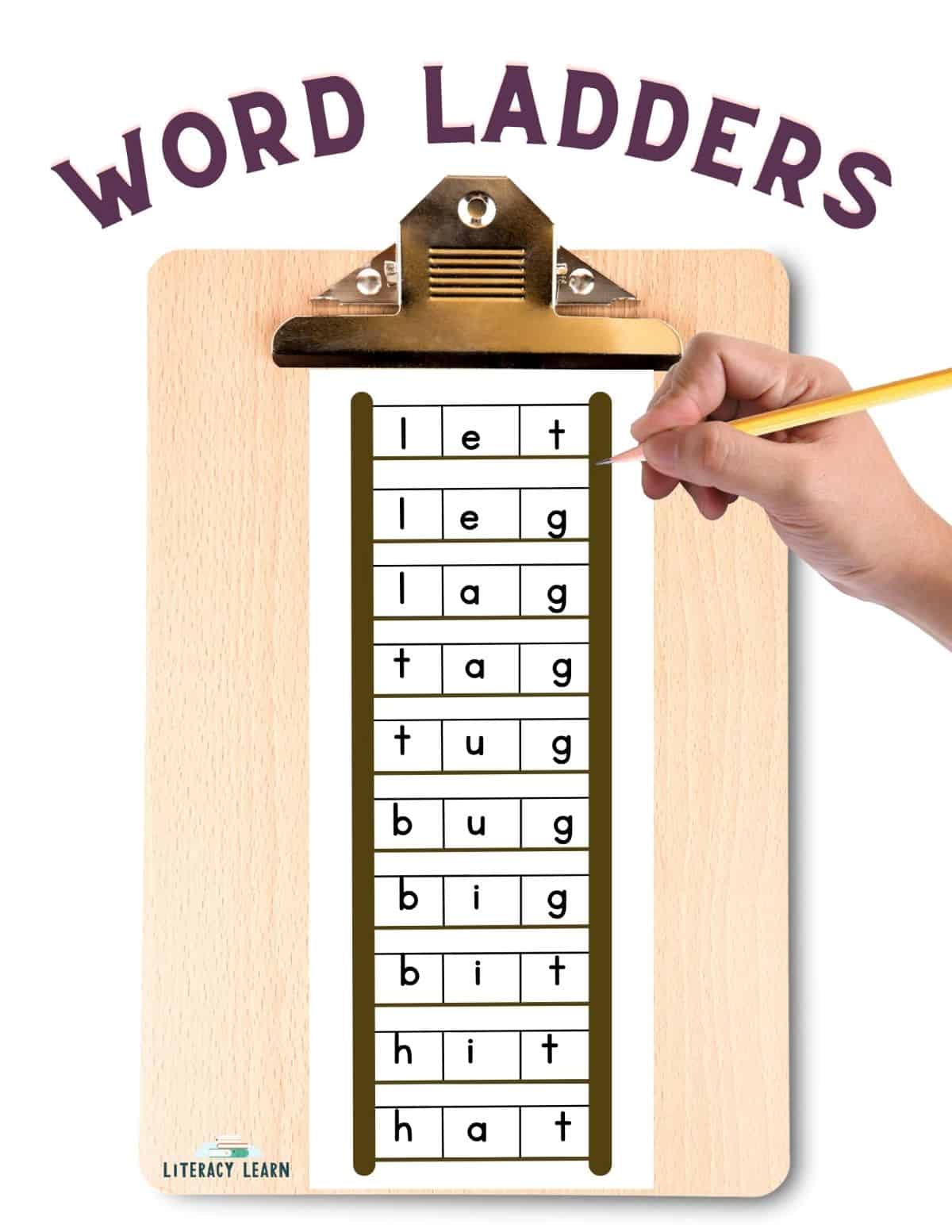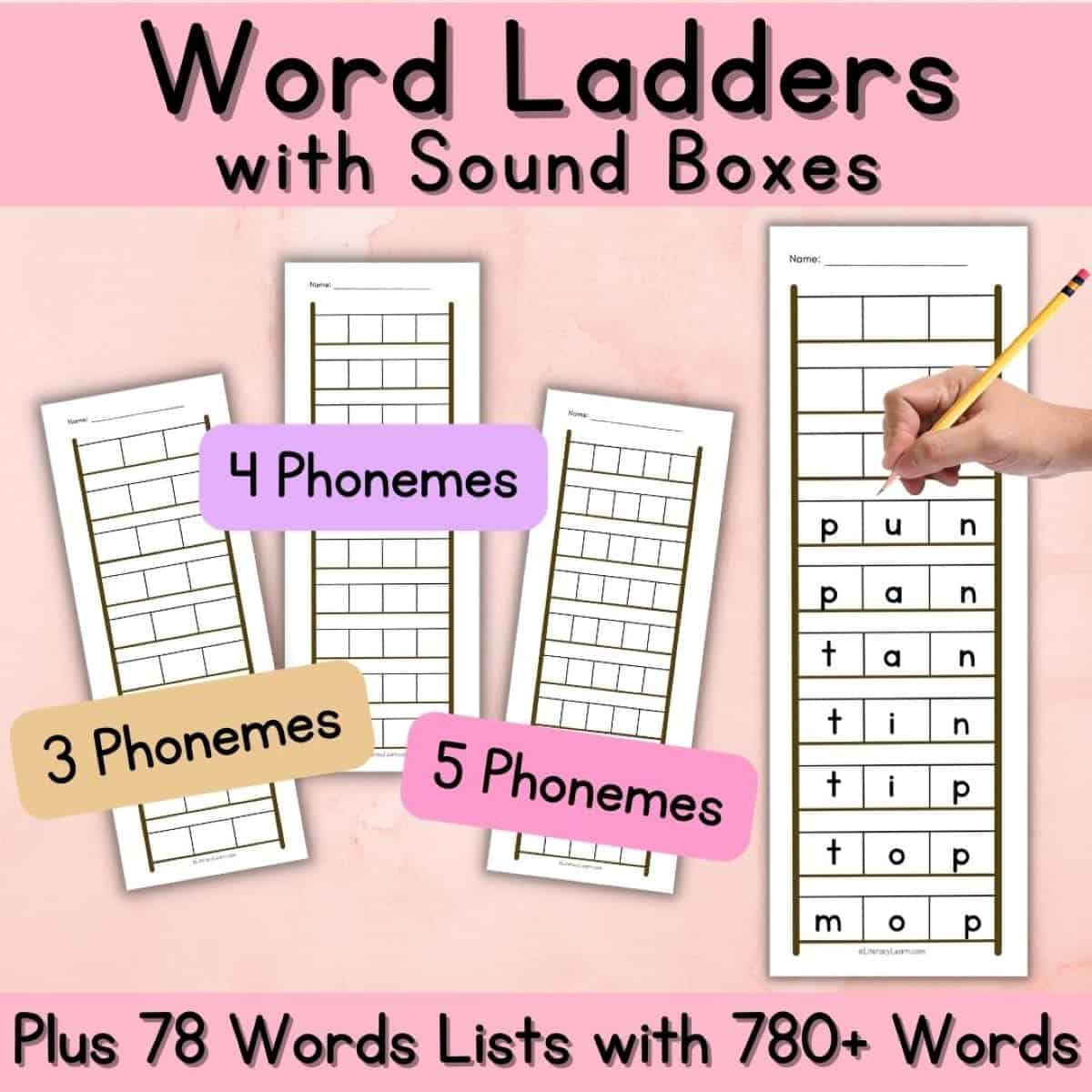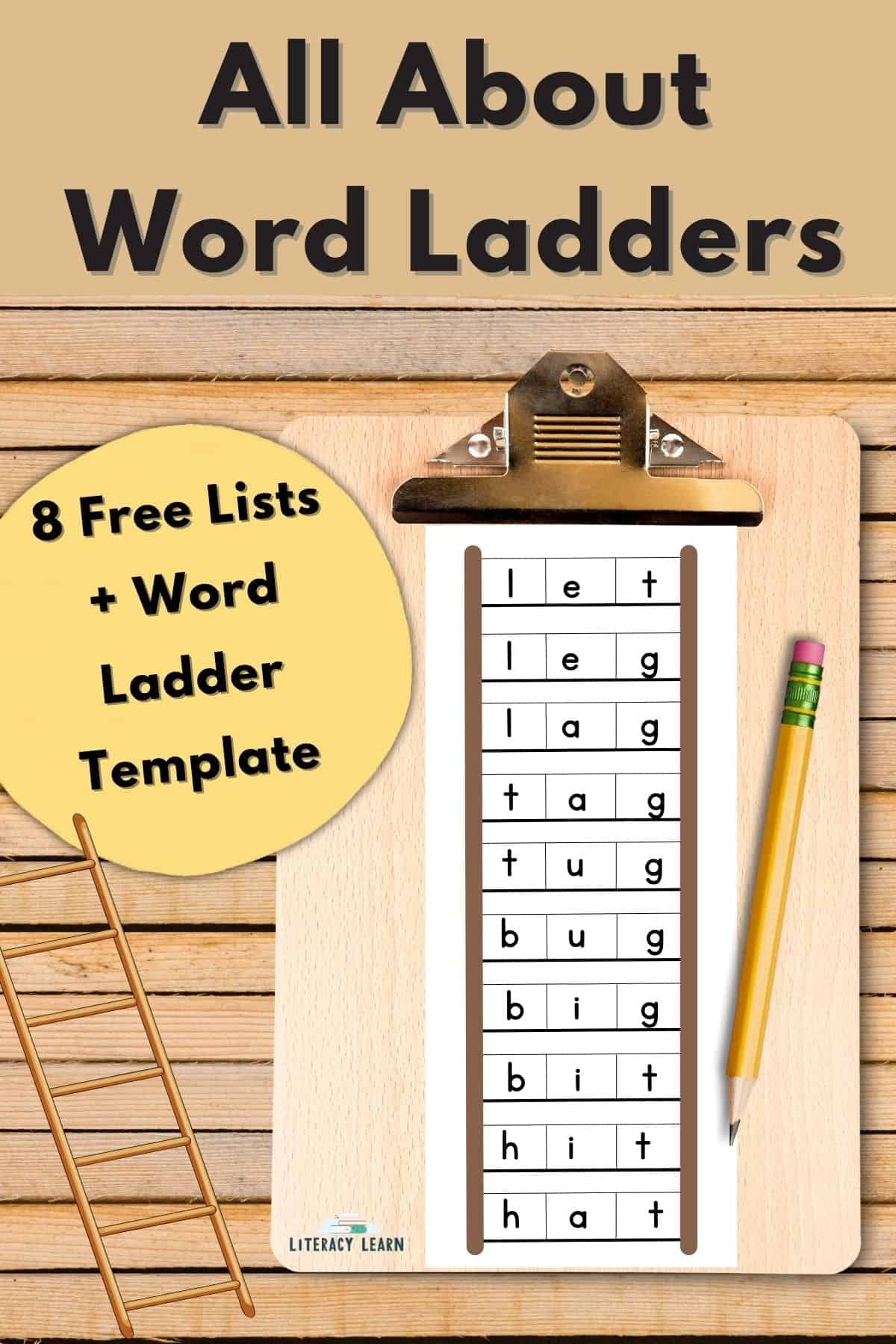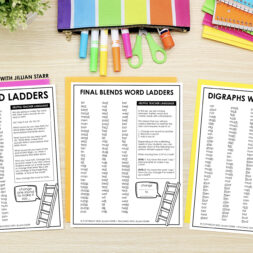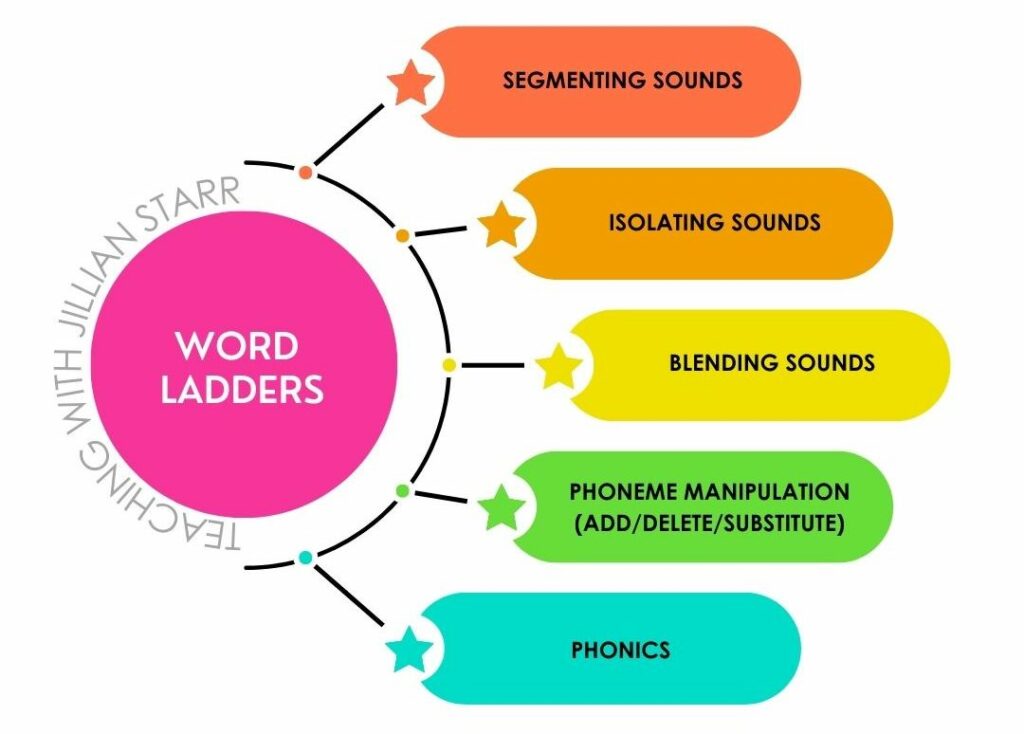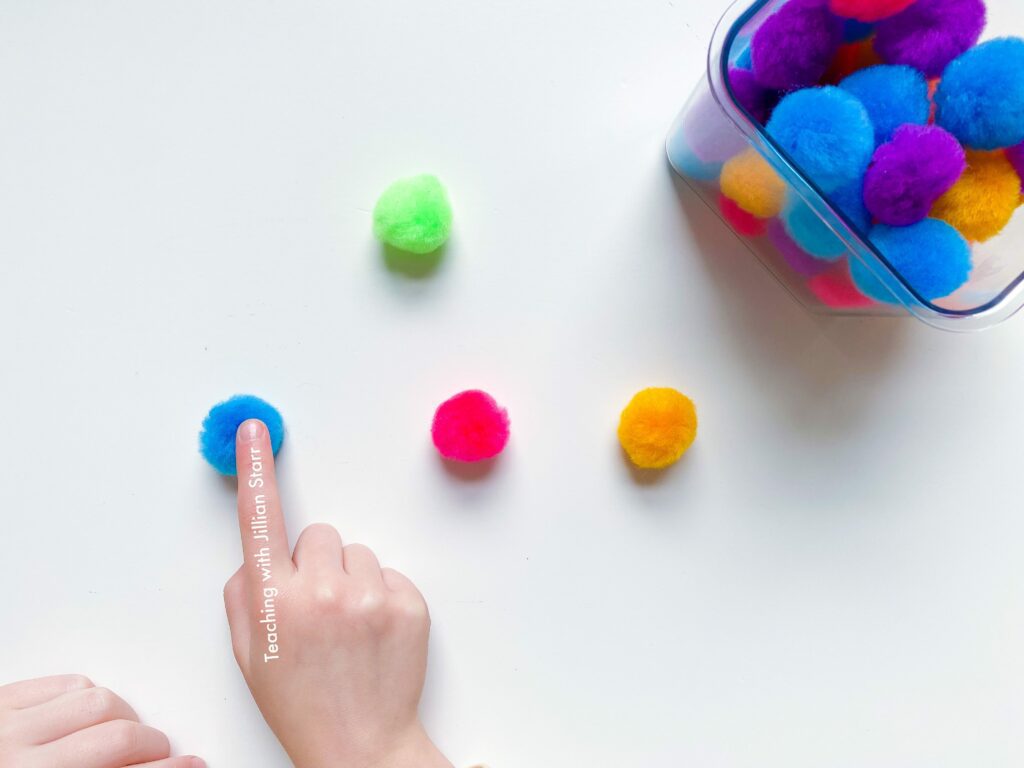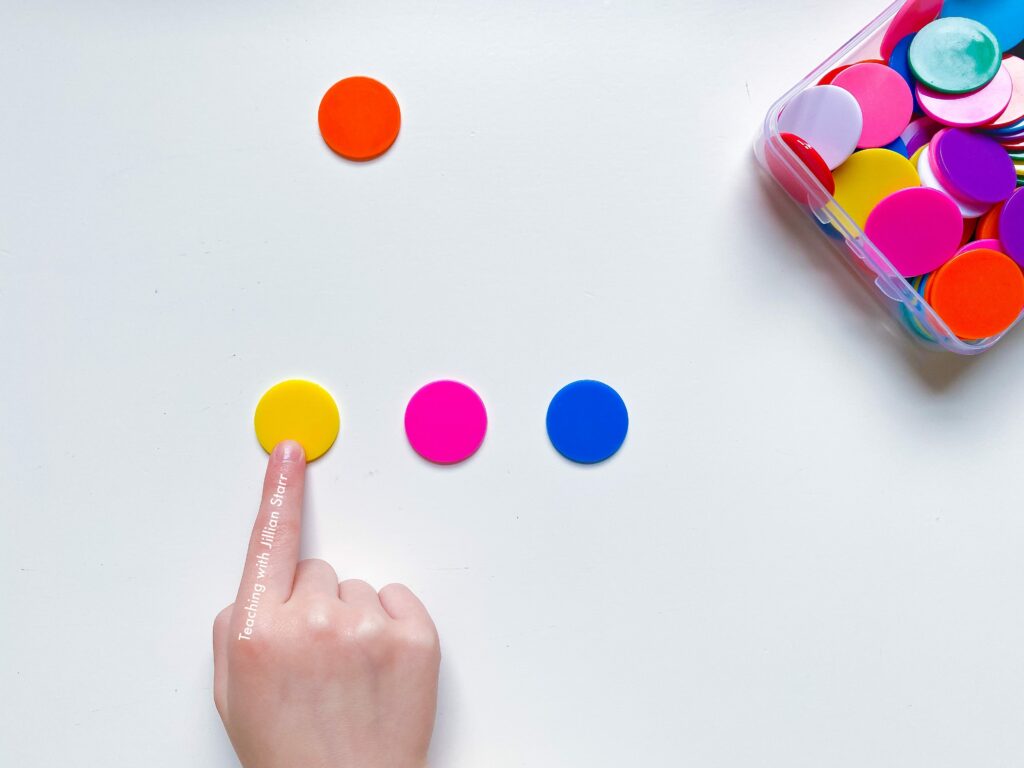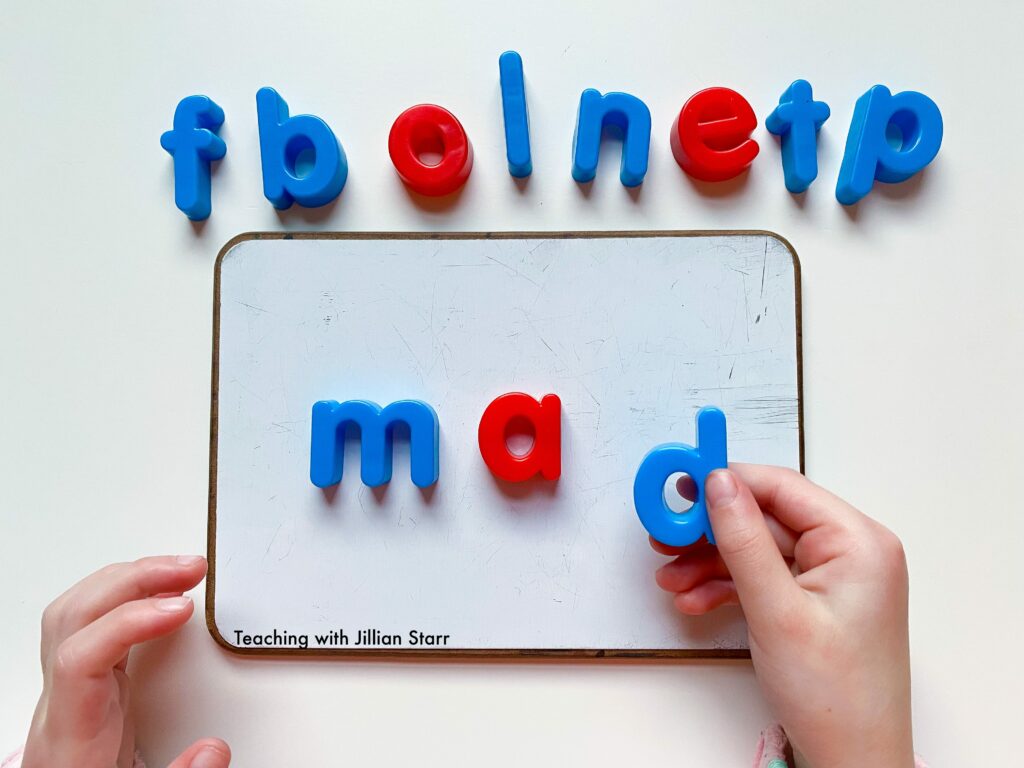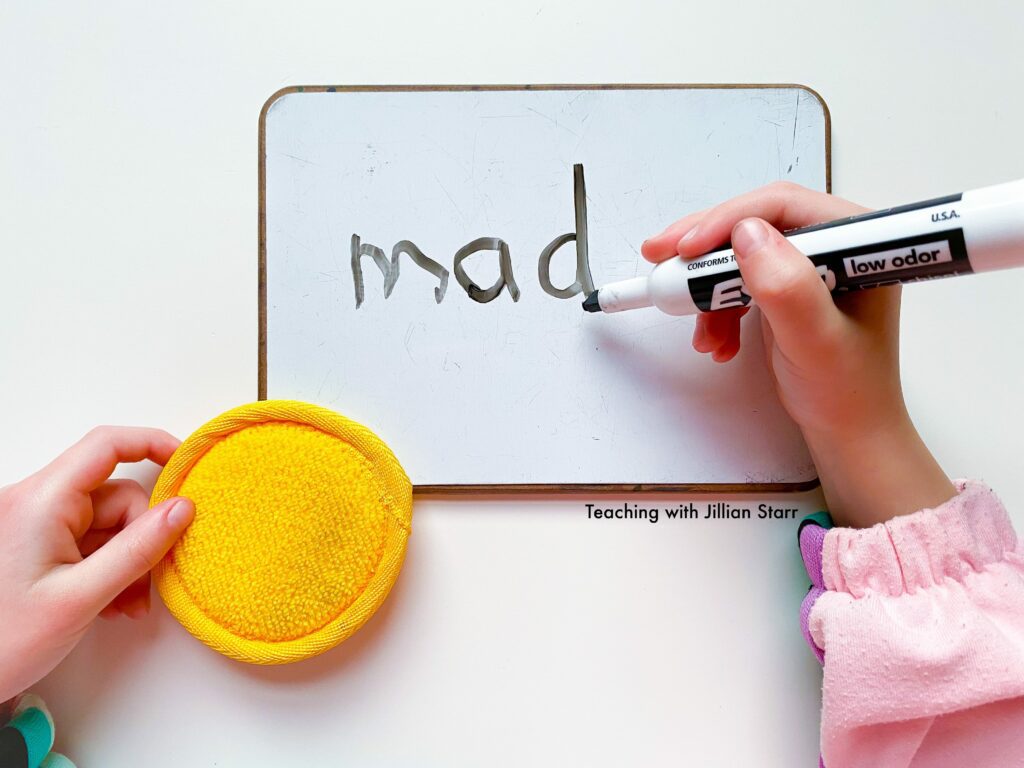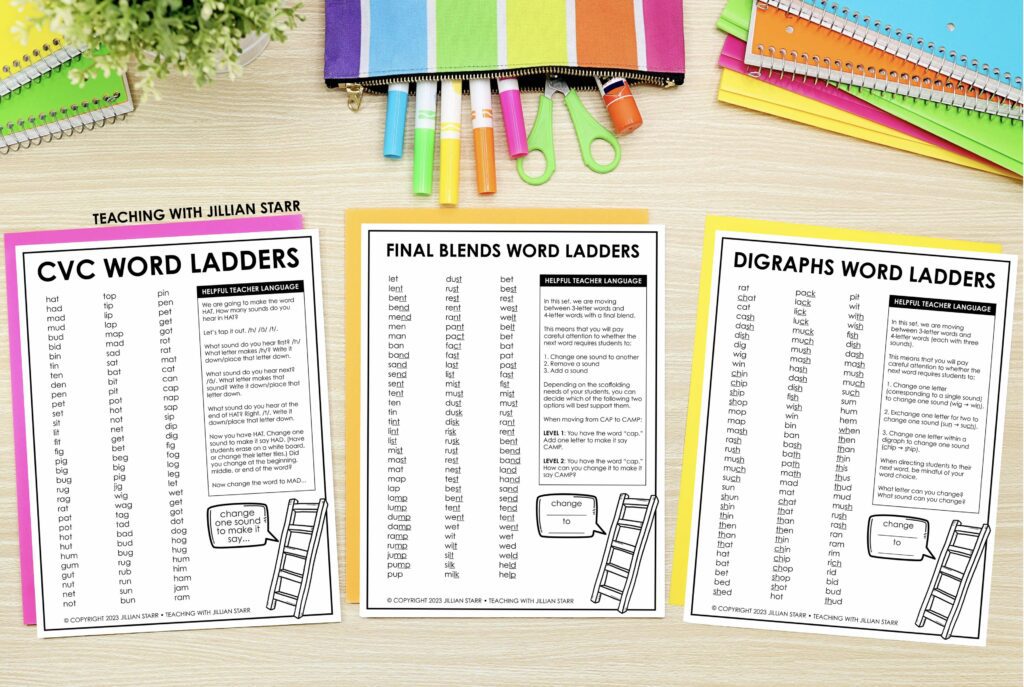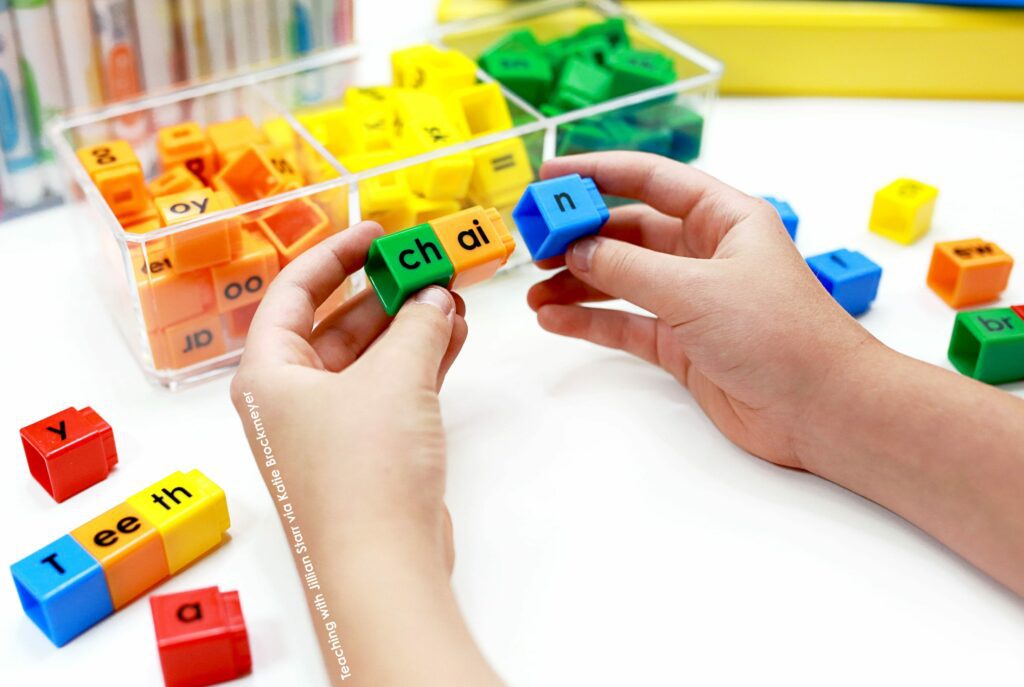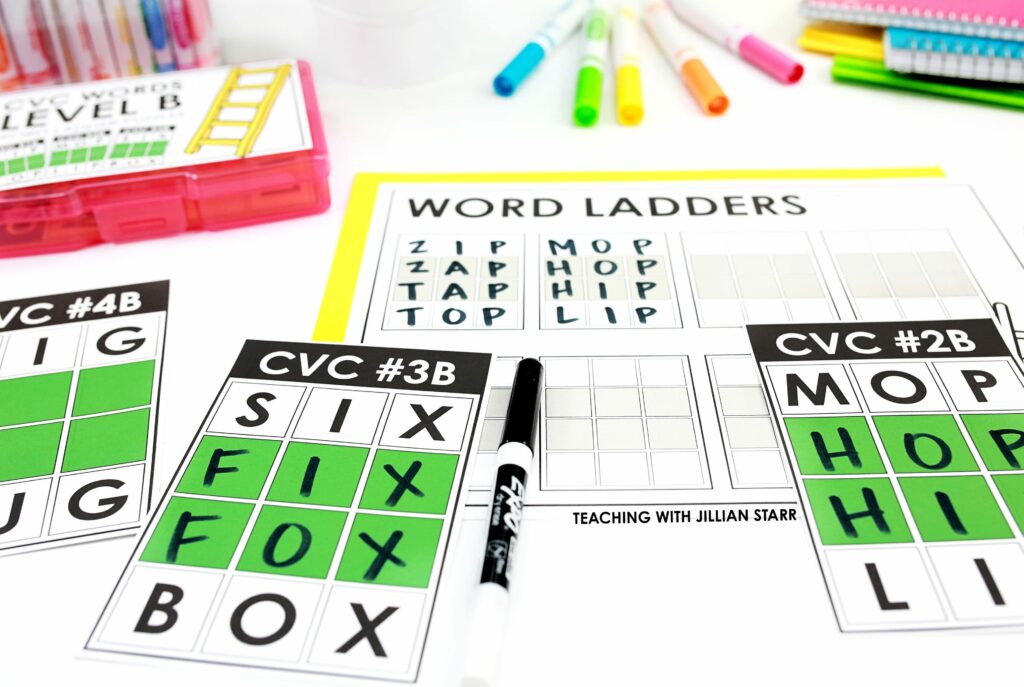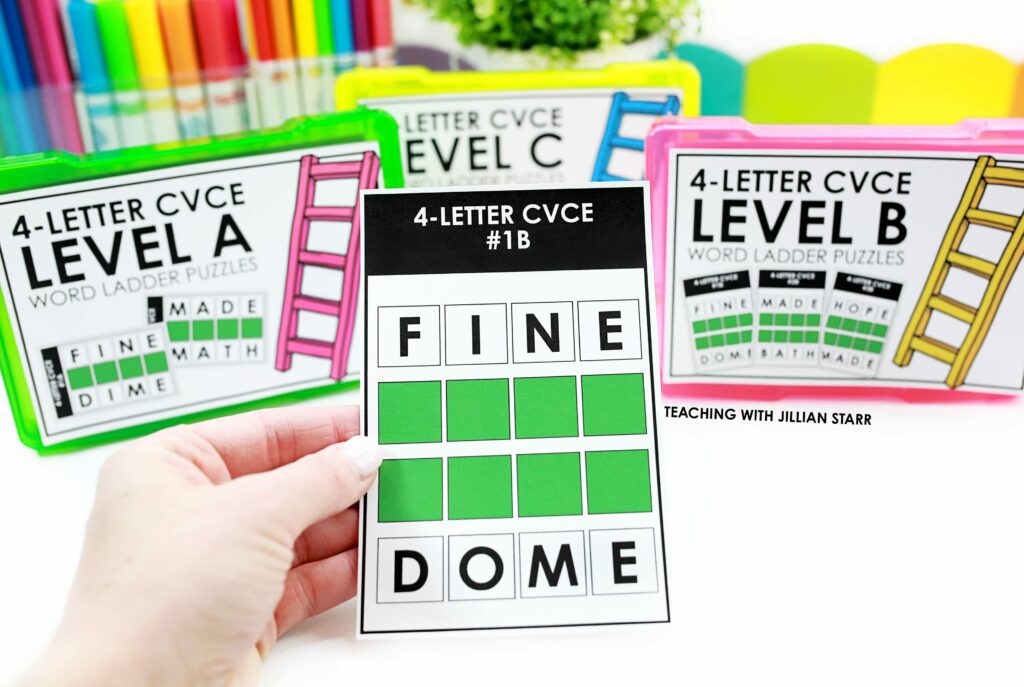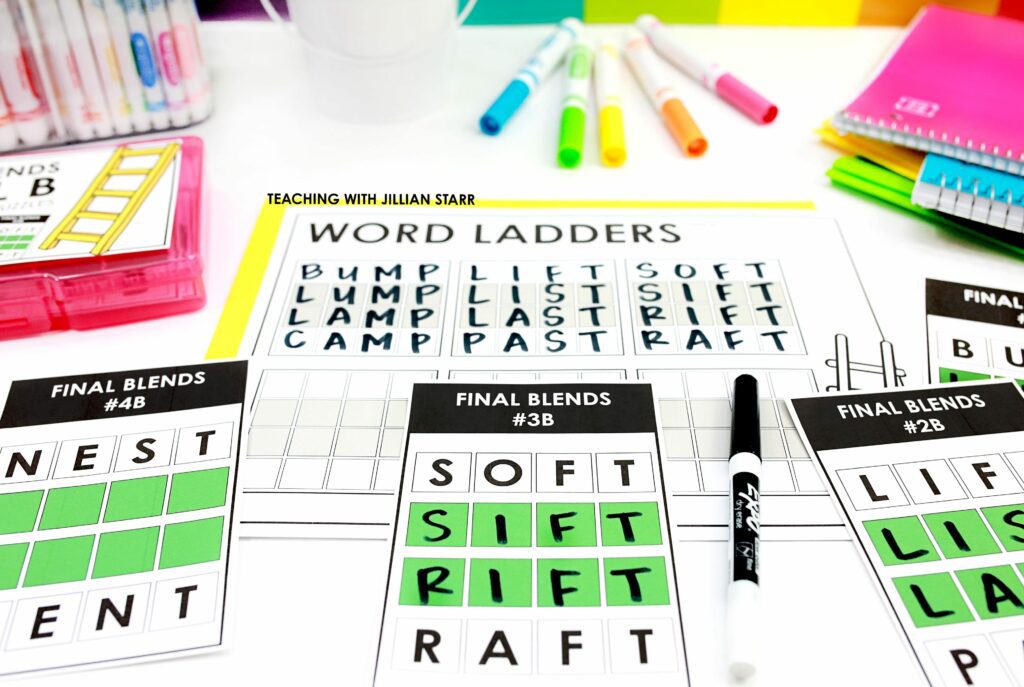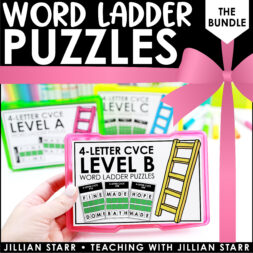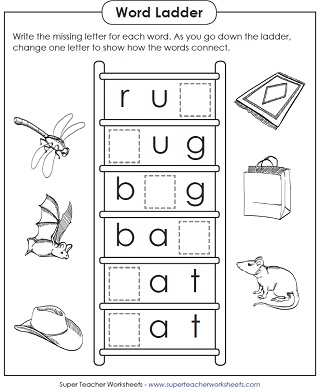Kids are more than capable of being great readers, but it can be difficult to motivate them. One way parents may find success is by playing games with their kids that build reading skills and vocabulary at the same time! Word Ladder helps kids work on decoding words while also teaching new words through a game-like experience. Playing word ladder has helped my son develop his fluency and made him much better reader in general–I highly recommend giving this game a try for your own kid today!
What is meant by word ladders
So, what is a word ladder ? It’s a game where you begin with one word and then create a sequence of words by changing just one letter from the previous word at a time. Each word in the sequence should be a proper english word. For example, if you want to create a word ladder from TEA -> POT , try TEA->PEA->PET->POT. Ladder grams, Word Golf, and Step word are some of the other names for this game.
What do word ladders help with
It’s a great game for building decoding, spelling, phonics and vocabulary skills which are an essential skill for reading. When kids are replacing letters to make a new word they are examining the letter-sound relationship which is important to recognize familiar words quickly and to correctly pronounce the written words. This is an important skill in order to learn how to decode and spell correctly. The kids might think that they are playing a game but in fact they are developing their important reading skills in a fun way.
How to Play Word LaddER GAME
You can have your kids play this game alone or in a pair. I generally like to play it with my kids.
- Give your kids a starting word and an ending word.
- Make sure the starting and ending words must be the same length (FLY and CRY, or SKIP and THAT)
- Each player change one letter at a time, attempting to move from the starting word to the ending word.
- As a rule, they can not change the order of the letters.
- And each intermediate step must be a valid word.
For example, if your starting word is COLD and ending word is WARM, then you can do it as follows
- WARM (change d – m )
- WARD (change c – w )
- CARD (change o – a )
- CORD ( change l – r )
- COLD
WORD LADDER EXAMPLES
Here, is a list of words to get you started.
I have also created a word ladder pdf file, the word ladder for Kindergarten is free to download below, all other grade levels can be downloaded from my Tpt store. The files contains word ladder puzzles with solutions for elementary level grades, but they’re the best kind of problem solving- because it’s not just about what words to use and how many letters are in them -it is all about figuring out where that one letter fits!
Simply click the download icon below to download and print this free printable. This worksheet is available for personal use only; no commercial usage of any kind is permitted.
If you share this printable, please link back directly to this post instead of the PDF.
There are several ways to teach your children at home. One method is to use a fortune teller to practice spelling words. Not only will children enjoy making their own fortune tellers, or as they call them, cootie catchers, but they will also enjoy learning to spell. For younger children, using easter eggs or drawing rainbow words can be a fun way to practice sight words. Try out some of these activities, and I hope these ideas will spark a little creativity in your homeschooling!
( Disclosure : Some of the links below are affiliate links, meaning, at no additional cost to you, I will earn a commission if you click through and make a purchase )
I love hearing from you. It’s so great when I get a comment, and it makes me feel like my blog posts are worth something! If you liked this post (or any of the others), please subscribe to our newsletter for updates on new content we publish frequently.
The best way is through Facebook because then you never miss anything…so consider liking us there too 🙂
Pin it for later

Learn why word ladders (aka word chains) are an effective strategy when teaching kids to read and spell with accuracy. Get two free printables so you can begin using word ladders in your classroom today!
What Are Word Ladders?
Word ladders, which are also known as word chains, are an instructional tool used to help children learn to read and spell while developing phonics and vocabulary skills.
There’s a very basic process to use word ladders: Kids begin with one word that follows a phonics skill they’re working on. Then, they’re asked to make a bunch of other words by making simple changes to the letters of the word that came before.
When students add, remove, or rearrange letters, they have to analyze the sound-symbol relationship that words have.
👉 Example: If you’ve taught your students closed syllable words and all short vowels, your word ladder may look like: hat ➡ hit ➡ bit ➡big ➡ bug ➡ tug ➡ tag ➡ lag ➡ leg ➡ let.
👉 Students start on the bottom rung and move up the ladder, changing the letters to represent the new sounds and spelling new words!
Through this simple chaining activity example, students have analyzed all five vowel sounds, plus beginning sounds and ending sounds.
👉 Repeated practice with this activity provides a bridge between phonological awareness and phonics, the two first building blocks of reading.
💗 Why We Love Them
Word ladders have TONS of benefits for students. In general, using them helps build kids’ decoding and encoding skills.
When using word ladders, students use phoneme-grapheme mapping, connecting sounds (phonemes) to written letters (graphemes).
This is an important research-based Science of Reading principle that has shown us how the brain stores words to become automatic sight words.
Word ladders force kids to listen to words, analyze the sounds, and connect them to written letters. The words usually change by one phoneme (sound), so students first need to decide which sound is changing in the word.
This is called phoneme manipulation, a phonemic awareness skill.
Then, students need to think about which grapheme (written letters) will represent the new sound, a phonics skill. It’s the perfect bridge between phonological awareness and phonics.
Best of all, children LOVE this activity! It’s challenging, fun, and rewarding when they make it to the top!
Students don’t even realize that they are engaged in a learning activity that reinforces important phonics skills they’ve been taught.
And it only takes a few minutes each day!
⛓️ Word Chaining Resource
To help you get started, we’re giving away a FREE resource for word chaining. Included are 8 word lists with 80+ CVC words. Also included is a word ladder with sound boxes for 3 phoneme words.
Time needed: 10 minutes.
How to Use Word Ladders
- The teacher dictates the first word on the list.
- The students repeat the word aloud.
- Students tap the sounds in word or use manipulatives for multisensory learning.
- Students spell the word in the first rung of the word ladder.
They should say each sound aloud as they write the word.
- Students check their word, saying the sounds and blending it together to read the word.
- The teacher dictates the next word on the list, saying “Change the word to….”
The teacher should NOT say which sound is being changed. This is for the students to figure out and practice.
- The teacher continues reading the words on the list while students chain each word, following the above procedure, until they reach the top of the ladder.
Looking for more? This is part of a bigger Word Chaining Resource that covers 780 words and tons of phonics skills, from CVC words to words with advanced diphthongs and everything in between.
Tips & Ideas
👉 Word ladders are great for kids in K-3 grade, or any students working on phonics.
👉 Word chaining activities are best used with small groups or whole groups with a teacher (or instructional assistant, volunteer, or advanced reader) reading the list aloud.
👉 Use this activity for encoding with small groups or with your entire class! Then, extend the activity and have students practice decoding the words quickly!
👉 Send the word ladders home for repeated review and practice.
👉✨This is the activity I pull out when administrators walk into my classroom to observe. My students are very familiar with the procedure (since we use it for each skill).
I always have extra ladders printed and sitting near my small group table, and then I quickly pull out my word lists and just like that! We’re doing meaningful and targeted phonics instruction that makes me look like a teacher of the year (with no prep)!
We hope you are encouraged to start implementing word ladders as a common instructional strategy within your classroom!
Related Posts
- All About Elkonin Boxes
- Word Families Anchor Chart
- High Frequency Words Game
- Phonics Bingo Games
🖨️Download & Print
We’d love to hear about your experience using these printables! Please leave a comment below or tag us on Instagram @literacylearn.
TERMS: All resources and printables are designed for personal use only in your own home and classroom. Each person must visit this site and download their own free copy. Please do not photocopy, email, or reproduce our printable resources for other teachers, and please do not reproduce our printables on the web or save them to a shared drive. Instead, please share the resources with others by using the social share links provided or by distributing the link to the blog post itself. This allows us to keep making free resources for everyone! If you have any questions, please email us. Please see our Creative Credits page for information regarding the licensed ClipArt used in our resources. Thank you!
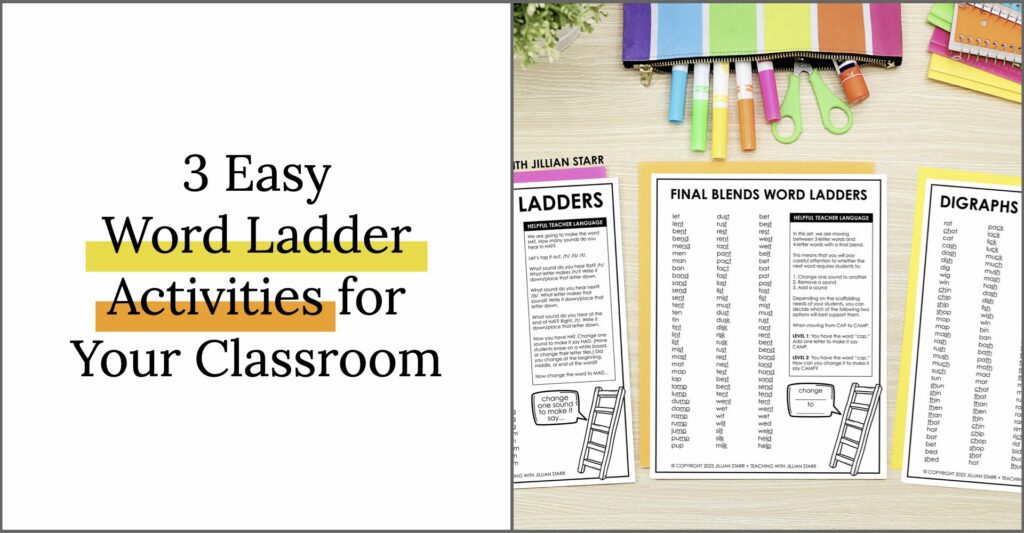
I’m excited to dive into word ladders with you. We will take a close look at how word ladders are such a powerful tool in our literacy instruction. We are also going to look at three easy ways to differentiate word ladders in your classroom to meet the needs of all learners.
But first… let’s answer one crucial question:
What are Word Ladders?
Word ladders (sometimes called word chains) are an exercise used to build phonemic awareness and phonics skills. They follow a progression where you change one sound at a time to create new words. Example: cat, hat, hit, pit, pot, dot, dog.
Free Word Ladder Lists
Stop trying to think on the spot and save that energy for observing your student’s phonemic awareness and phonics skills. Get these FREE word ladder lists delivered straight to your inbox!
Depending on the delivery, these versatile exercises can be done with the whole group, in small groups, at centers, or as individual work.
All students benefit from systematic, explicit, and consistent instruction in phonemic awareness and phonics. If you’re unsure about the importance of these skills or what they include, I would encourage you to read this blog post on the Science of Reading, and this article for some specific background knowledge.
Now, word ladders are an incredible tool to add to our teacher toolbelts, because they can support our explicit instruction. Word ladders build so many essential literacy skills:
- isolating sounds
- segmenting sounds
- blending sounds
- phoneme manipulation (addition/deletion/substitution)
- phonics
- vocabulary
- and more
Because word ladders can target so many skills simultaneously, they are an ideal addition to any classroom.
Even better? Word ladders can be easily differentiated (both in content and setting). Huzzah!
1. Using Word Ladders in Small Groups
Small groups are the perfect place to introduce word ladders and keep them a consistent part of your systematic instruction. I want to make sure that my students can access this activity, so I select words that my students are currently working with and/or have already mastered.
Phoneme Word Ladders
Don’t worry! If you have students who are not ready for letters, you can still use word ladders with them! We simply focus on phonemes (the units of sound) and leave out the graphemes (the letter representations of those phonemes).
How does that work? Well, first we need bingo chips, pom-poms, plastic gems, or any other small (and engaging) item. We will use these to represent each individual phoneme. For this example of phoneme word ladders, let’s say we’re using bingo chips.
- I will give each student 4 bingo chips. I ask how many sounds they hear in the word “hat”?
- /h/ /a/ /t/ I have them place three bingo chips in a row to represent each of those sounds. (The extra stays on top and has no sound assigned.)
- We segment the sounds again, /h/ /a/ /t/, pointing to one chip at a time as we say each sound.
- We blend the sounds together to say “hat”.
- I point to their chips and say “if this is HAT, show us MAT.”
- We segment the word /m/ /a/ /t/
- We determine which sound needs to be manipulated (initial medial, or final)
- Students exchange the first chip in their row with the extra (fourth) chip to visually show the sound manipulation.
- We segment the sounds again, /m/ /a/ /t/, pointing to one chip at a time as we say each sound.
- We blend the sounds together to say “mat”.
We can continue manipulating sounds and stop before our students tire of the activity. We can slowly bring sound additions/deletions into the mix (e.g. moving from “mat” to “mast” or “mat” to “at”).
We can also try more sophisticated skills like blends and digraphs. For blends, you will need additional bingo chips, but remember that digraphs (like ch, th, and sh) will only need one bingo chip for that single sound.
Grapheme Word Ladders
For my students who are ready for letters, I will often start word ladders with CVC words (short vowel words that follow a consonant-vowel-consonant pattern). I do this even if my students are farther along in their phonics studies. This will help them get used to the routine, and the language around word ladders.
I personally prefer whiteboards and markers, but you can use so many different tools or manipulatives for your word ladder lessons. Some favorites include:
- magnetic letters
- letter tiles
- write & wipe boards
- sand/shaving cream trays
For this example, let’s use whiteboards. I write the word “map” on the whiteboard. Then, I ask my students to read it. We segment each sound (/m/ /a/ /p/) and blend it together.
Then I tell them that I want to change this word to “mad.” Just like our phoneme word ladders, we segment each sound (/m/ /a/ /d/) and identify which phoneme needs to be changed, and then which grapheme will replace it.
On a whiteboard, I model how to do this by erasing the “p” and writing a “d” in its place.
Next Steps
After a few rounds, I take word ladders a step further. Students receive their own whiteboards, markers, and erasers.
I continue to provide new words for our word ladders and have students erase and write new letters as we manipulate sounds.
You can find FREE lists of word ladders below (I made a bunch by phonics skill so you don’t have to think on the spot!)
Free Word Ladder Lists
Stop trying to think on the spot and save that energy for observing your student’s phonemic awareness and phonics skills. Get these FREE word ladder lists delivered straight to your inbox!
2. Independent Exploration of Word Ladders
In small groups, we modeled word ladders together, where students had constant access to a teacher to support any questions or misunderstandings.
After several successful experiences in small groups, they are ready to continue practicing word ladders in a more independent setting.
Presenting… Word Ladders with Phoneme Snap Cubes.
How does it work?
You might be asking yourself, Aren’t snap cubes a math manipulative?
Yes! This means they are most likely already available in your classroom, and students already know how to use them.
Students begin with a pre-built word of snap cubes (these can be either purchased pre-made, or created using a sharpie/stickers on the cubes in your classroom). Each cube represents a letter or a phoneme (a sound). Students can exchange one cube (one sound) for another to change the word.
Here’s an Example:
- A student begins with the word “chain”.
- They exchange the “ch” cube for the “r” cube, creating the word “rain“.
- Next, they change the “n” for an “l“. This creates the word, “rail“.
- And so on.
Finally, I always ask students to record the words they make as they turn the snap cubes and create new words. The addition of a recording sheet transitions the word ladder exercise from group work to independent work. (Note: This can simply be a piece of paper in their journal or a piece of lined paper. It doesn’t have to be fancy!)
3. Opportunities for Enriching Word Ladders
It’s time! Finally, after plenty of practice with word ladders, I introduce my favorite word ladder activity: Word Ladders Logic Puzzles.
What are word ladders logic puzzles?
They are a combination of word ladders and logic puzzles. Like math logic puzzles, I give students enough clues that there is only one possible solution. They start with the first and last words of the word ladder. Then, they have to solve the two (or more) words that could lead them from the first word to the last word, using the same phonetic focus.
Here’s an example:
Let’s say students are working on CVCe words. We practiced CVCe word ladders on whiteboards in small groups. Then, students continued to use snap cubes as an independent activity. Now, they are ready to continue their work on CVCe words independently with a little more challenge: logic puzzles.
- A four-word puzzle begins with the word FINE and ends with the word DOME.
- First, students must ask: What are the differences between these two words? The answer: The first three letters.
- Second, students need to think about a word that is one letter different than FINE that might get them closer to their final word, DOME. In this case, DINE.
- Students have to play around with this to see if a second word can be made that is one letter different than DINE to get them closer to DOME. In this case, DIME.
- Finally, students must check: Is there only a one-letter difference between DIME and DOME? Are these both real words? If the answer is yes to both… it is solved!
How do students problem-solve with words?
I got this question a lot when I first shared word ladder logic puzzles last year.
For me, the answer is simple: Decoding is problem-solving. And, while no numbers are involved, sounds (phonemes) and letters (morphemes) add together to create whole words with meaning. That means each step of learning how to read and spell (and working with word ladders) involves problem-solving.
Subsequently, each word ladder involves manipulating letters leading to the necessary step of solving the sounds and meaning of the word. Remember the FINE to DOME example? Students need to think logically about the steps they could take from point A to point B.
Word Ladder Puzzles
5 Sets of Word Ladder Puzzles (available separately or together). These puzzles are perfect for building phonemic awareness and phonics skills! With multiple levels for each word ladder puzzle, you can be sure to engage ALL of your students!
Logic Puzzles Are For EVERYONE
One more win for Logic Puzzles: easy differentiation. Word Ladder Logic Puzzles can adjust to each student’s working level. That means while the whole class might be working on CVCe words, students won’t receive the same logic puzzles.
There are multiple ways to differentiate:
- Expand the number of words between the first and last to make the problem-solving more complex.
- Use larger words. For example, my higher-need students work with three-letter words, while those with more experience and understanding work with five-letter words.
Word ladders are just one activity that supports an SoR-aligned curriculum. They are versatile, easy to differentiate, and provide nearly endless practice with decoding and constructing words. Perhaps surprisingly, they aren’t a new idea. Teachers have been using word ladders (under various names) for decades. That’s because THEY WORK! How are they working in your classroom? As you introduce word ladders to your students, let me know!
If the kids love playing word ladders, don’t get worried about them wasting their time. Word Ladder is a game and an excellent tool to help students develop their word power and imagination. How? Let’s read on.
How do Word Ladders Help Students? Word Ladder is an excellent game to make education fun. Word Ladder can be an initiative or a head start for kids who don’t love to study. It improves word power and provides a proper foundation that can make a student feel confident when he speaks.
Role of Word Ladder:
Nowadays, it’s rare to see a love for reading. Books are beleaguered because people seem to have diversions like television, internet, games, and mobile phones; ultimately, the reading habit is threatened.
With all these distractions and a busy schedule, how can you improve your vocabulary? The solution is simple; you read enough books, come across a word, maybe twice, thrice, the usage teaches you the meaning.
Hence, reading increases vocabulary. Meanwhile, there’s another fun way to improve your tongue just by playing a game. YES! Some fun word games can surely enhance vocabulary. Word Ladder is one of those. It is suitable for all ages even preschoolers.
Word Ladder is a puzzle in which the player gets two words initial and end. Also, a Ladder or a level can reach from the initial word to the end word. The player needs to transform the initial word into the given end word in minimum steps. The word length can be 3, 4, 5, or 6-letter.
They have different patterns and rules. Few might have an actual ladder-like puzzle where the player needs to change the word from bottom to top. Or images will be given, which makes it a little bit easy.
Read this article for more details: How Do Word Ladders Work?
The word length should always remain the same (the word length should not change at any point in transformation).
Suppose you are thinking about how a word-changing game can help you. Right here, we will discuss how word ladders help students ranging from preschoolers to high school.
How Word Ladders help Preschoolers:
Preschool kids are curious about learning and acquiring knowledge through games and experiences. It’s an age where a child gains internal control over its senses. Thus social, language, cognitive, and motor skills are crucial in these formative years.
Preschoolers usually have excellent grasping power in languages. Therefore, word ladders are good enough to solve and improve their vocabulary.
Word Ladders help the child to recognize sounds and vowels. To change words, a child needs to listen, acknowledge, and decide on alphabets. With practice, the child notices patterns within words. Please try to explain the meaning of words. By doing so, WORDS becomes their VOCABULARY!
How Word Ladders help Kindergarten kids:
Very young children, aged from 3 to 5, are considered to be Kindergarteners. Kindergarten is an exciting transition between a preschool and a school. Kindergarten comes with a balanced blend of writing, reading, mathematics, and a specific routine. Kindergarten’s main motive is to teach a child how to read, write, and follow a curriculum. These years of KG are the foundation, and laying the right base is the key to academic success.
Children begin to be self-dependent readers and writers. Gradually, they become comfortable with reading and writing. Students read and listen to stories, mainly for memorization. They recognize and produce words. They try to add or substitute words (sounds), making new words.
To improve reading and writing skills, a child can read and repeat, solve some puzzles. Word Ladders helps kindergarten kids notice vowels, consonant, and their spellings.
The use of pictures, drawings to create a word develops a crucial skill of creation/invention. The creation of spelling is vital because it produces a deeper understanding of the alphabet and sounds.
Word Ladder does the same. Word Ladders with pictures build sound-symbol relationships, improve spelling, and broaden vocabulary. It’s a fun way to reinforce vowel sounds to boost fluency in a never overwhelming way.
How Word Ladders help Students of the Primary:
Students aged between 5 and 11 years are considered to be in the primary. Children learn through visual, audio, exploration, experimenting, and mistakes. Primary is an age where word ladder difficulty needs to be slightly raised. In preschool and Kindergarten, word ladders included pictures and usually 3-letter words. From Primary, word ladders can be 4-letter words with pictures.
Word Ladders develop various skills like listening, communication, problem-solving, writing, observation, and words. It inspires the child to attain a more in-depth knowledge of vocabulary, making them comfortable communicating with their family and peers.
Word Ladders emphasize children know, explore, understand, and form their ideas. It enhances active, supportive, and creative learning. Thus, it strengthens the foundation in literature.
How do they help Secondary School students:
Secondary schooling is the time where a student enters a new phase of life. It’s a phase where studies get serious, and they get to know where their academic interests are. In a way, you can say that their competitive life begins. Usually, the school duration and coaching lectures also get increased (by a few hours).
So, are games like Word Ladders still relevant? Yes, the answer is that by solving Word Ladders over time, the students start to decode patterns within words. It’s awesome if they make their word ladders. However, it’s great to opt for books as it’s a beautiful resource.
Word Ladders are not only an opportunity for students to improve pattern deduction, listening skills. But also an opportunity for developing critical thinking and testing formative assessment.
How Word Ladders help High School Students:
It is time to build the career a student has been aspiring to. Academics and performance have a significant influence here. A student becomes truly independent in academic planning and views it from a different perspective.
Though there are additional pressure and expectations from all ends, High School stresses more on knowledge, language fluency, and structure. So, the one with good communication skills and presentation has the upper hand.
Word Ladders may not directly play a significant part now, but they can increase your word clouding. By word clouding, I mean expanding the similarity in words, learning vocabulary in sets of the word’s synonyms, antonyms, and its correct usage.
High School students can go for higher word ladders because they have a better grasp of literature now. They may prefer complicated word ladders more like a crossword puzzle-like long words and higher levels as they are capable enough to form similar words.
So, a 5, 6, or even 7 letters word ladder is apt for them. Word Ladders can force high school students to search for new words as the length increases; the difficulty increases too.
High school ones can understand intricate patterns, so word ladders can now increase the quality of the words they speak.
Conclusion:
So, building the language basics with Word Ladders is quite essential. If your child takes little interest in studies, with Word Ladders, you can make studies exciting for him/her. Try to get picture ladders for preschoolers and Kindergarten. So, try word ladders as they can bring intangible benefits to the little brain.
Level: Basic
In this puzzle, students build the words rug, bug, bag, bat, rat, and hat.
Pre-K through 1st Grade
Logged in members can use the Super Teacher Worksheets filing cabinet to save their favorite worksheets.
Quickly access your most used files AND your custom generated worksheets!
Please login to your account or become a member and join our community today to utilize this helpful feature.
Words in this word ladder puzzle include jet, pet, pen, pan, fan, can.
Pre-K through 1st Grade
Change log to hog, then hog to hot, then hot to hat, then hat to mat, then mat to man.
Pre-K through 1st Grade
Complete the word ladder by filling in the missing letters. Words include: wig, pig, big, bag, bug, mug.
Pre-K through 1st Grade
Students build simple CVC words to complete the puzzle. List includes: cot, cop, map, pot, pop, and mop.
Pre-K through 1st Grade




